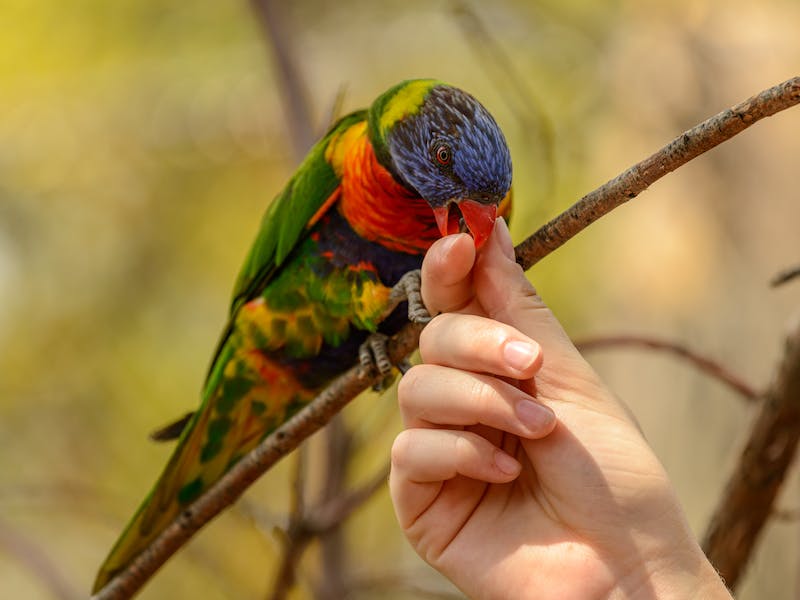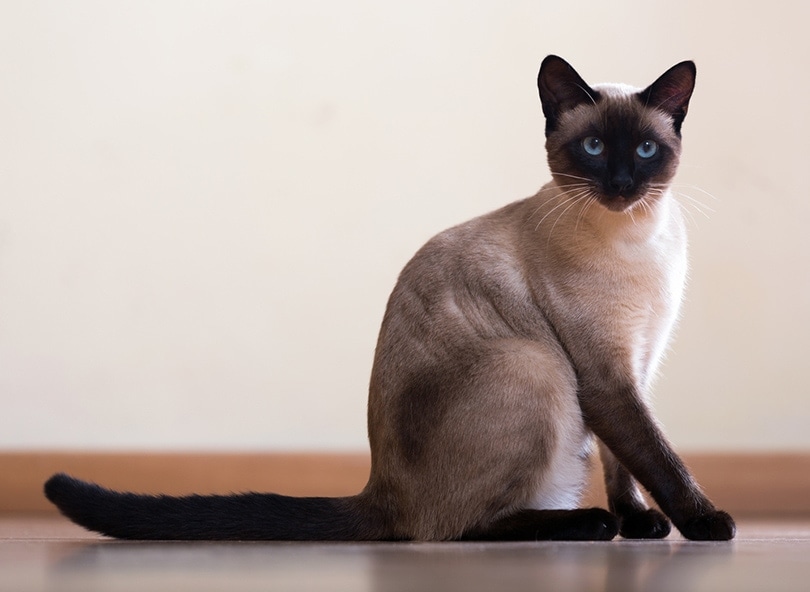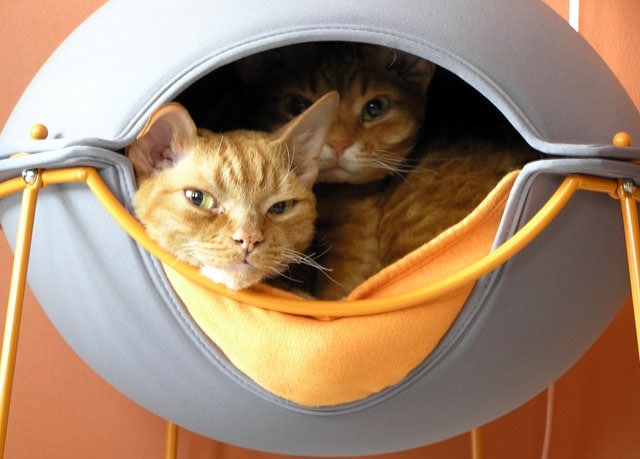Pocket Pitbull (a.k.a. Miniature Pitbull): Info, Pictures, Characteristics & Facts

Updated on
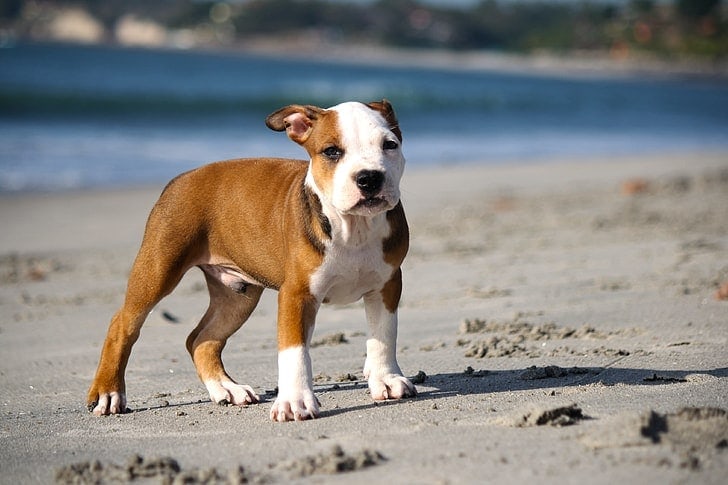
| Height: | 12–16 inches |
| Weight: | 11–22 pounds |
| Lifespan: | 11–13 years |
| Colors: | Black, blue, white, tan |
| Suitable for: | Families with children, active singles, houses with a yard |
| Temperament: | Energetic, friendly, protective, intelligent |
If you love breeds such as the American Pitbull but would prefer something smaller, the Pocket Pitbull is for you. Also known as the Pocket Bully, this breed is a cross of the American Pitbull and the tiny Patterdale Terrier. As such, the Pocket Bully is a designer dog that combines the best traits of its parents (the Pitbull Terrier and Patterdale Terrier) into a hybrid canine.
Thanks to the unique traits they inherit from their lineage, the Pocket Bully is a great option for active people who do not have large amounts of living space. This dog is stocky, active, and intelligent. They are also incredibly loyal, as well as affectionate. Nonetheless, they need to be professionally trained and socialized before they can be allowed to interact with children. They also require mental and physical stimulation to prevent behavioral problems, as they are extremely high-energy dogs.
Are you interested in learning more about the Pocket Pitbull? Read on.
Pocket Pitbull Puppies
Pocket Pits are unique, and this has only raised their demand and exclusivity. Due to those factors, Pocket Bully pups are more expensive than purebred American Pitbulls. When you’re looking for your pup, take your time to find a reputable breeder who has ethical breeding practices. Make sure the breeder shares information about the puppy’s health with you and lets you meet the puppy’s parents or siblings.
When you bring a Pocket Pitbull home, be ready to have an active dog by your side. Training and early socialization should be at the top of your list so your dog gets along with other animals and remains calm around strangers.
3 Little-Known Facts About the Pocket Pitbull
1. Pocket Bullies Are Great Watchdogs
While Pocket Pits were bred to be companions, they are also great watchdogs. They have an acute sense of smell and hearing and are close to the ground, which allows them to pick up on vibrations from footsteps.
2. Pocket Pits Are Not Aggressive
One would mistakenly assume that Pocket Bullies are aggressive, owing to their American Pitbull ancestry, but they are actually easy-going dogs. However, they are incredibly brave and protective, which means that they will act out if they feel that you are in danger. For the most part, however, they are loving and playful.
3. Pocket Pitbulls Do Not Bark Excessively
While Pocket Pits can be quite expressive when playing, they are rather laidback most of the time. These dogs do not bark for no reason.
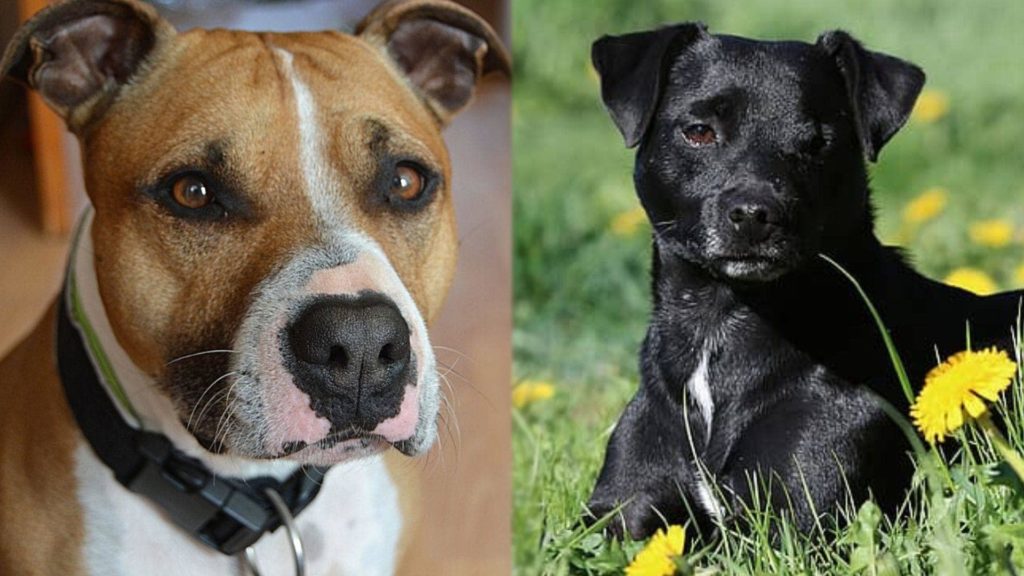
Physical Traits of the Pocket Pitbull
The Pocket Pit, or Miniature Pitbull is a short and stocky dog, with some dogs being remarkably muscular. The average Pocket Bully has a glossy, short, smooth, and thick coat that is easy to maintain. Let’s take a detailed look at the Pocket Pitbull’s features.
Height and Weight
While this dog is called a “pocket” Bully, that does not mean you can fit one in your pocket or purse. Nonetheless, they have a small stature, with males reaching a maximum height of 17 inches and females getting to 16, which is why their other nickname “Miniature Pitbull” suits them well. When it comes to weight, Miniature Pitbull males weigh between 11 and 22 pounds, while females weigh between 10 and 20 pounds.
Appearance
Despite being small and stocky, Pocket Pits have the fierce look of the American Bully. They have the musculature and a stocky build with a bulky neck and a wide, large head. Pocket Pitbulls also have a broad chest, low-level back, and short, muscular legs.
Their ears are small and floppy, and their tail is thin and of medium length. Basically, a Pocket Bully looks like a miniature American Pitbull.
Colors
Pocket Pits come in a variety of colors, with some spotting a solid color and others spotting multiple colors. The most common colors include blue, black, brown, fawn, buckskin, blue and tan, black and tan, and white and seal.
Coat
Due to the Miniature Bully being a mixed breed, it is difficult to determine what coat a pup will have. American Pitbulls typically have a short and smooth coat with no undercoat, while Patterdale Terriers have a coarse and thin coat with a dense undercoat.
As such, Miniature Pitbulls can exhibit the short and smooth coat of American Pitbulls or the coarse and dense coat of the Patterdale. The kind of coat that your Mini Pit has will determine how you should groom them.
Pocket Pitbull Lifespan
On average, the Pocket Bully lives between 11 and 13 years. However, this animal can live longer if provided with adequate care. This involves giving them a healthy lifestyle consisting of a proper diet and adequate exercise.
Male Pocket Pitbulls reach sexual maturity at around 12 to 15 months. At this age, they can mate with and impregnate fertile female dogs. Healthy Pocket Pits retain their sexual vigor and fertility well into old age. Females, on the other hand, reach sexual maturity as early as six months. However, some can attain theirs as late as two years.
Temperament and Intelligence of the Pocket Pitbull 🧠
American Pitbulls only display unchecked aggression when not professionally trained and socialized. The same holds true for Pocket Pits, who are incredibly friendly and loving dogs. Being intelligent canines, Pocket Bullies are highly trainable. Nonetheless, these animals are incredibly loyal and can be overly protective. The good news is that they are smart enough to differentiate threatening ones from non-threatening ones.
As mentioned, when professionally trained, Pocket Bullies are sweet and gentle creatures. This means that they get along well with children and other house pets. In fact, Pocket Pits are considered gentle enough to be classified under the “nanny dog” category.
Pocket Bullies are incredibly social as well, which means that they can be trained to tolerate strangers.
Things to Know When Owning a Pocket Pitbull
Raising a Pocket Pitbull requires that you have a good understanding of their needs. This will help you raise a healthy dog.
Food & Diet Requirements 🦴
The kind of food that you feed your dog determines their development and health. Pocket Pits can eat the following types of foods.
Raw Dog Food
This includes organ meat, chicken, turkey, kelp, salmon, lamb, eggs, vegetables, and fresh fruit. The best part about raw foods is that unlike cooked or preserved foods, they do not lose nutrients and minerals. Nonetheless, you have to be careful about these types of foods as they come with an increased risk of bacteria. Therefore, ensure that you get your raw dog food from health-certified sources.
- We reviewed the best raw dog foods – check out our favorites here!
Premium Dog Food
This is food that is specially prepared for canines. As such, it contains the appropriate amounts of protein, vitamins, minerals, and other nutrients that a Pocket Pit requires to thrive. Moreover, this food is designed so it is easy for your dog to digest.
Homemade Dog Food
You can prepare food for your Pocket Bully at home using meat, vegetables, and fruits. The benefit of preparing dog food at home is that you have control over the ingredients in your dog’s diet. Nevertheless, it also means that you have to be meticulous during preparation to ensure that the food does not get contaminated.
Exercise 🐕
As mentioned, the Pocket Bully is among the most energetic dog breeds. This means that they need a great deal of exercise to utilize that energy. Without ample playtime, you will have a highly destructive dog.
The average Pocket Bully requires a minimum of 2 to 3 hours of exercise per day. If you cannot afford it, give them an hour of intense activity, which would mean taking them out for a run (not a jog) for about an hour.
This is why Pocket Pits are recommended for active people.
Training 🦮
In addition to being intelligent and full of energy, Pocket Bullies are confident and therefore, independent. This means that without training, this dog will be difficult to handle. Simply put, Pocket Pitbulls need to recognize you as their leader for them to be obedient, and this requires training and socialization.
Here are tips for training Pocket Bullies:
Reward-Based Training
This is an effective way of training Pocket Pits. It involves rewarding the dog with a treat whenever they follow instructions correctly. Since Pocket Bullies love treats, they will be quick to understand the things that get them rewarded.
Clicker Training
This involves using a clicking device that makes a sound whenever you want the dog’s attention. You can even use your tongue and mouth to make the clicking sound. Whenever they respond to the sound, reward them. Tailor the sound to whatever command you want the dog to execute. With time, they will learn to execute those commands.
Praise Them
Pocket Pitbulls are highly perceptive of your emotions. As such, avoid displaying any kind of negative emotion around them. Positive emotions, on the other hand, are a great thing. When you are happy with them, the Pit will immediately recognize it and try to make you even happier.
As such, ensure that you shower them with praise whenever they do something right or put in effort. Show your excitement by exclaiming phrases such as “Good boy/girl,” “Good job,” or “You can do it!”
Grooming ✂️
Pocket Pitbulls do not require much grooming. As mentioned, most Pocket Pits feature a short coat, which means that it is easy to manage. The only thing that you have to do is to brush their coat regularly, which should only take a few minutes.
However, ensure that you keep their nails trimmed and their teeth and ears clean.
Health Conditions ❤️
As with many other dog breeds, Pocket Bullies are predisposed to certain health issues. These are either hereditary or from improper care. Some include hyperthyroidism, hip dysplasia, heart disease, eye problems, and allergies.
Nonetheless, compared to most breeds, Pocket Bullies are hardier canines.
Male vs. Female
The decision to choose a male Pocket Pit or a female Pocket Pit depends entirely on your preferences. Male Pocket Pitbulls typically have a more dominant personality and therefore, can be harder to train. Female Pocket Pits are sweethearts but might not be as “exciting” as males.
Final Thoughts
Pocket Pitbulls are among the best breeds of canines to adopt when looking for a dog companion. They resemble American Pitbulls but are much shorter, hence being called Miniature Pitbulls. Nonetheless, they can still display aggression if not properly trained, thanks to their courageous nature.
Training, therefore, is imperative when it comes to Pocket Pitbulls. You will also need to exercise them thoroughly to help them vent their energy. Consequently, Pocket Pits are best for active people.
Related Reads:
- Jafox (Japanese Chin & Toy Fox Terrier Mix)
- Dorgi (Dachshund & Welsh Pembroke Corgi Mix)
- English Borsetter Collie (English Setter & Border Collie Mix)
Featured Image Credit: Pickpik




